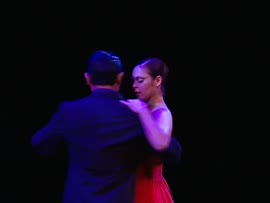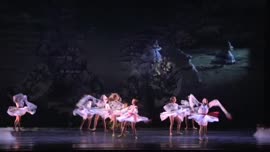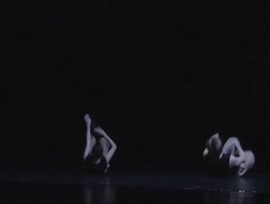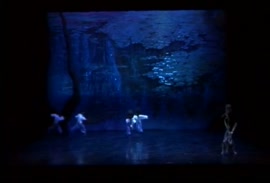Zone du titre et de la mention de responsabilité
Titre propre
Dénomination générale des documents
Titre parallèle
Compléments du titre
Mentions de responsabilité du titre
Notes du titre
Niveau de description
Cote
Zone de l'édition
Mention d'édition
Mentions de responsabilité relatives à l'édition
Zone des précisions relatives à la catégorie de documents
Mention d'échelle (cartographique)
Mention de projection (cartographique)
Mention des coordonnées (cartographiques)
Mention d'échelle (architecturale)
Juridiction responsable et dénomination (philatélique)
Zone des dates de production
Date(s)
-
1996-2016 (Production)
- Producteur
- Gordey, Gordon
Zone de description matérielle
Description matérielle
35 text files (PDF)
9 video files (m4v)
2 books (58 pages each)
Zone de la collection
Titre propre de la collection
Titres parallèles de la collection
Compléments du titre de la collection
Mention de responsabilité relative à la collection
Numérotation à l'intérieur de la collection
Note sur la collection
Zone de la description archivistique
Nom du producteur
Notice biographique
Gordon Gordey (Master of Fine Arts, Master of Arts, Bachelor of Education) was a key builder in the evolution of the Ukrainian Shumka Dancers of Canada. In his forty years with Shumka, Gordey transitioned from a dancer, to a librettist/writer, and to a stage director, conceiving twenty-five original dance works for Shumka from 1992 to 2012. His works set a benchmark for Ukrainian dance in Canada and have toured across Canada, Ukraine, and over 20 cities in China. Gordey also served as Shumka's Artistic Director and Chief Executive Officer for 12 years. Gordey is privileged to be a Honourary Lifetime Member of the Ukrainian Shumka Dancers.
In his creative career outside of Shumka, Gordey studied ballet with Ruth Carse, founder of Alberta Ballet, spent 20 years as an Arts Consultant with the Department of Culture in Alberta, and worked for 13 years as a Human Rights Officer with the Alberta Human Rights Commission. He has been teaching Drama for 37 years at Grant MacEwan University in Edmonton. For Alberta's Centennial in 2005, he conceived and produced Celebrate Alberta as part of Her Majesty Queen Elizabeth II's official welcome to Alberta's Centennial event, which included 1500 performers. In the same year, Gordey was recognized as one of the most influential people in the development of theatre in Alberta in the publication: Theatre 100. In 2006 he received the Hetman Award for Outstanding Contributions and Dedicated Service in Promoting Ukrainian Heritage and Culture in Alberta. He continues to serve the Ukrainian Canadian community as a National Board Member of the Ukrainian Canadian Foundation of Taras Shevchenko.
Below is an autobiography provided by Gordon Gordey.
"I was born in 1948 into the farming community of Innisfree, in northeast central Alberta. My great-grandparents, George and Magdalena Gordey arrived in Canada on June 2, 1900 emigrating from Borivsti, Bukovyna in present day Ukraine. Unlike the predominantly Ukrainian settlement prairie villages in northeast central Alberta, Innisfree was ethnically diverse. In general, everyone who lived north and west of Innisfree was of Ukrainian heritage and everyone who lived south and east of Innisfree was of British heritage. The village was a hub of Canadian diversity of the era, even though no-one was aware of this at the time.
Growing up my parents, John and Emily Gordey, hammered home over and over again to me: “Bud' kul’turna l’udyna– Be a cultured person”. There was no caveat that being “cultured” meant that part of me that was Ukrainian. It was an inclusive guidepost for life. This phrase stirred my imagination. From a young age it made me reach for a higher ground. I read everything I could from Canadian war stories, to every classic of British and American literature and to Dostoyevsky, when I was only 14 years old. I stood as close to the stage as I could at Ukrainian weddings and learned to sing the wedding songs. I listened to dance bands of Metro Radomsky and Jimmy Watsko stir my emotion for Ukrainian music with their wonderful singing violins. Church services filled my imagination with myth, magic and mystery. Folk superstitions kept me awake at nights after visits to Baba K. who poured wax onto the water, whispered incantations, and cured me of my fear of roosters.
Grade school whizzed by with academics, participation in all school sports, and singing in the rock band, The Rivals, in the 60’s. In 1965 I experienced a pivotal event that would lead me into the world of Ukrainian dance. I attended a summer cultural program, Osvita, at St. John’s Institute where I was instructed in Ukrainian dance by a fiery young Shumka dancer named Gerald Metrunec. Like me, he was from rural Alberta, the town of Myrnam, and had come to Edmonton to join the Ukrainian Shumka Dancers and go to University. Within 10 days he used my background in athletics to drill into me the basics of Ukrainian dance. That fall, upon my return to Innisfree, I knew more about Ukrainian dance than anyone in my community, and was tagged to teach Ukrainian dancing in the town of Vegreville. My survival as a dance teacher with limited pedagogy depended on my creativity, my knowledge of music, and the drive to excel in dance that Gerald Metrunec had instilled. In 1966 my family moved into Edmonton and I joined the Ukrainian Shumka Dancers. Edmonton became my cultural oasis. I also immersed myself in ballet, jazz, theatre studies, choirs, musicals, and operatic singing lessons. Like-minded friends like the musically gifted, Gene Zwozdesky and the top male ballet and Ukrainian dancer of the day, Orest Semchuk inspired me to adhere to the guidepost of “Be a cultured person.” The Drama Department at the University of Alberta was at a high point of fine art at the time and filled my thirst for learning and practicing world theatre and art.
It is from this well-spring, “Dzerelo”, of experiences that my 40-year journey of creating original Ukrainian dance in Canada took flight." (Gordon Gordey, March 7, 2017)
Historique de la conservation
Portée et contenu
Gordon Gordey autobiographical reflection of a 40-year creative journey with The Ukrainian Shumka Dancers of Canada recounts his experiences creating his original artistic works with The Ukrainian Shumka Dancers of Canada. By documenting his dance concepts and librettos Gordey reveals his challenge to contribute original works to the canon of Ukrainian dance that is spiritually connected to generations of continuous cultural practice and resonates with 20th and 21st century audiences in Canada, Ukraine, Russia, and China. He speaks to evolving dance stories that embed themselves in viewer’s minds and become shared cultural touchstones in the evolution of our Canadian identity at home and abroad. Dance concepts and librettos for: Shumka’s Cinderella, Pathways to Hopak, Girl in the Red Dress TANGO, Vechornytsi (the multi-works in Life is a Cabaret), Eve of Kupalo - a Midsummer’s Night Mystery Masque and Voices of the Silenced are enhanced with photographs and video excerpts of the dances in performance.
This work was published in Ukrainian as a peer reviewed chapter in Collected Papers on Ukrainian Life in Western Canada, edited by V. Polkovsky and M. Soroka, Ostroh Academy National University Press, 2014, Vol. XLVII, Part Seven, pp. 242-275. All rights reserved. The English text was revised in 2016 for the deposit into the Archives. We have digital and physical access copies.
Zone des notes
État de conservation
Source immédiate d'acquisition
Classement
Langue des documents
- anglais
- ukrainien
Écriture des documents
Localisation des originaux
Disponibilité d'autres formats
Restrictions d'accès
Délais d'utilisation, de reproduction et de publication
All rights reserved.
No part of this material may be reproduced or transmitted in any form or by any means whatsoever, electronic or mechanical, without express written permission from the author, except in the case of brief quotations embodied in critical articles and reviews.
Instruments de recherche
Éléments associés
Accroissements
Identifiant(s) alternatif(s)
Numéro normalisé
Numéro normalisé
Mots-clés
Mots-clés - Sujets
Mots-clés - Lieux
Mots-clés - Noms
- Ukrainian Shumka Dancers (Sujet)







